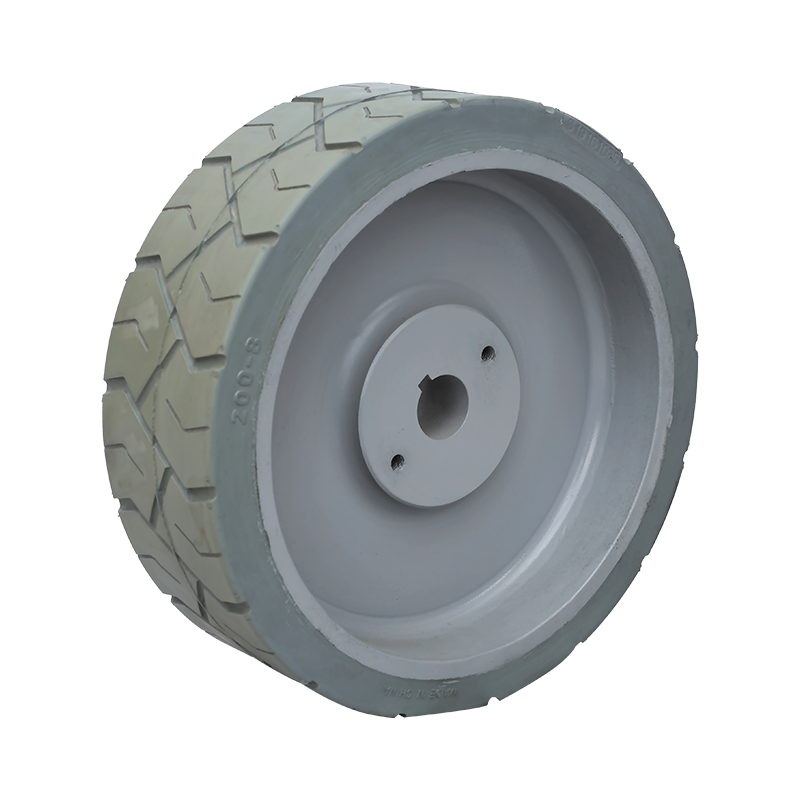Can the Puncture Resistance of Aerial Work Platform Tires Be Improved with Fill Materials or Reinforcing Layers?
The puncture resistance of aerial work platform tires can indeed be enhanced by using fill materials or reinforcing layers. Below are the specific technical principles, methods, and an analysis of their advantages and disadvantages:
1. Foam-Filled Tires
Foam filling is a common method for reinforcing tires, where polyurethane foam or other elastic materials are used to replace air inside the tire, thereby improving puncture resistance.
Working Principle: Foam filling creates a solid supporting structure inside the tire. Even if the outer tread is punctured, the tire will not lose air or support.
Advantages:
Strong puncture resistance: The filled tire does not rely on internal air pressure, so it will not fail due to punctures or cuts.
Maintenance-free: There is no need to worry about tire inflation, making it suitable for working environments with many sharp objects.
Increased load capacity: The filling material enhances the tire's load-bearing ability, making it ideal for heavy-duty aerial work platforms.
Improved stability: Foam filling reduces tire deformation, enhancing platform stability during operations.
Disadvantages:
Increased weight: Foam filling significantly adds to the tire's weight, which may affect the platform’s mobility and fuel efficiency (or battery life).
Higher cost: The filling material and the process can be expensive, making it suitable for specific application scenarios.
Reduced comfort: Due to the lack of elastic cushioning, the shock absorption may not be as good as air-filled tires.

2. Reinforced Tires
Reinforced tires have one or more layers of high-strength materials (such as steel wires, Kevlar fibers, or polyester) added to the tread and sidewalls to improve puncture resistance.
Working Principle: The reinforcing layers help distribute the puncturing force of sharp objects, preventing debris from penetrating the tread or sidewall, thereby protecting the tire’s interior.
Advantages:
Significant puncture resistance: The multi-layer structure effectively resists penetration from sharp objects such as nails or glass shards.
Moderate weight increase: Compared to foam filling, adding reinforcing layers has less impact on the tire's overall weight.
High flexibility: The tire retains its elasticity and shock-absorbing properties, making it suitable for work environments that require some comfort.
Strong adaptability: The reinforcing layer can be tailored to meet different operating conditions, offering targeted improvements.
Disadvantages:
Increased cost: Using high-performance materials (e.g., Kevlar) can raise the manufacturing cost of the tire.
Durability issues: Reinforcing layers may experience fatigue from long-term use or frequent flexing, which could affect puncture resistance over time.
3. Combination of Foam Filling and Reinforcing Layers
In practical applications, foam filling and reinforcing layers can be combined. For example, foam can be added to a tire with reinforcing layers to further enhance its puncture resistance, making it suitable for extreme operating conditions.
Applicable Scenarios:
Construction sites: Sharp objects are common, and standard tires may be easily punctured.
Harsh environments: Complex terrain and high-load operations require higher durability and safety.
Aerial work: Tire stability and puncture resistance are crucial, as any failure can lead to significant safety hazards.
4. Other Alternatives
Solid Tires: Completely eliminate puncture issues but sacrifice shock absorption. Suitable for short-distance travel or flat surfaces.
Self-sealing Tires: A self-healing coating is applied inside the tire. When punctured, the coating automatically seals small holes. This is ideal for medium puncture risk environments that require maintaining a lightweight design.
5. Cost and Performance Trade-offs
When making an actual selection, the following factors should be considered:
Working environment: Are there many sharp objects or harsh ground conditions?
Budget: Foam filling is expensive but has low maintenance costs; reinforcing layers offer a better cost-performance balance.
Operational requirements: Is shock absorption or high load capacity a priority?
This analysis outlines how tire puncture resistance can be enhanced through the use of fill materials or reinforcing layers, with each solution offering its own set of advantages and trade-offs depending on the specific operational environment and needs.
CONTACT US
-

Email: SMT001@saimeite-tyre.com
-

Phone: +86-18451337018No. 1, Renmin South Road, Yandu District, Yancheng City, Jiangsu Province, China

 English
English 한국어
한국어 Français
Français Español
Español











